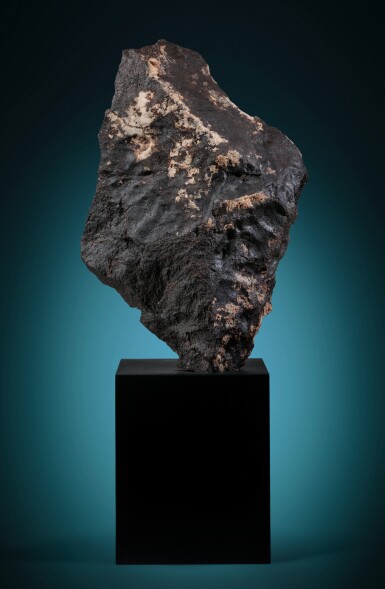
Clarendon (C) — The Second Largest Specimen Of The Largest Stone Meteorite Found In Texas
Lot Closed
July 27, 02:30 PM GMT
Estimate
16,000 - 20,000 USD
Lot Details
Description
Clarendon (C) — The Second Largest Specimen of the Largest Stone Meteorite Found in Texas
Chondrite – L4
Clarendon, Texas, USA
361 x 241 x 62 mm (14¼ x 9½ x 2½ in). 6.065 kg (13.33 lbs).
The third distinct meteorite found outside the small town of Clarendon, Texas was named Clarendon (c). It originated from the asteroid belt and was found on April 6, 2015 by Frank and DeeDee Hommel on their ranch just outside of town. Weighing 345 kilograms (759 pounds), it is by far the largest stone meteorite found in Texas, and the third largest stone meteorite ever found in the United States. In addition to the 345 kg mass, the Hommels also collected 32 kilograms of fragments which broke off from the large mass — and now offered is the largest of those fragments.
As described by meteorite hunter Rubin Garcia in a November 2016 article for Sky & Telescope:
Frank took me to where the meteorite was literally pulled from the ground with the help of his John Deere tractor. When I asked how he'd found it and how he knew it was a meteorite, he told me his horse Samson played a big role. “I was taking a few people horseback riding when we decided to cut across so the horses could drink some water by the dam," Frank explained. "As we rode up this hill I could see the top of the stone sticking out of the ground, and when we got within about ten feet Samson stopped. He would only snort and blow at the stone — but refused to get any closer." Having noticed its rusty color, Frank dismounted, picked up a few fragments, and noticed they were extra heavy for their size. Right away he reasoned that he and Samson had found a meteorite.
The main mass is now a centerpiece at the renowned Monnig Meteorite Gallery at Texas Christian University in Fort Worth. As seen in the secondary image (taken prior to the meteorite having been cleaned), the parallelogram-shaped mass now offered clearly cleaved off the main mass. The meteorite’s exterior surface has a milk chocolate patina accented with patches of caliche — a calcium carbonate which adheres to most anything buried in the arid to semi-arid southwestern United States. The reverse provides a glimpse of the deep gray interior matrix which clearly contains chondrules — small spherules which are a diagnostic feature of most stone meteorites as well as bright metallic grains, another signature feature of the L4 stone meteorites. Accompanied by a custom armature, this is the largest available mass of the largest stone meteorite found in Texas.
